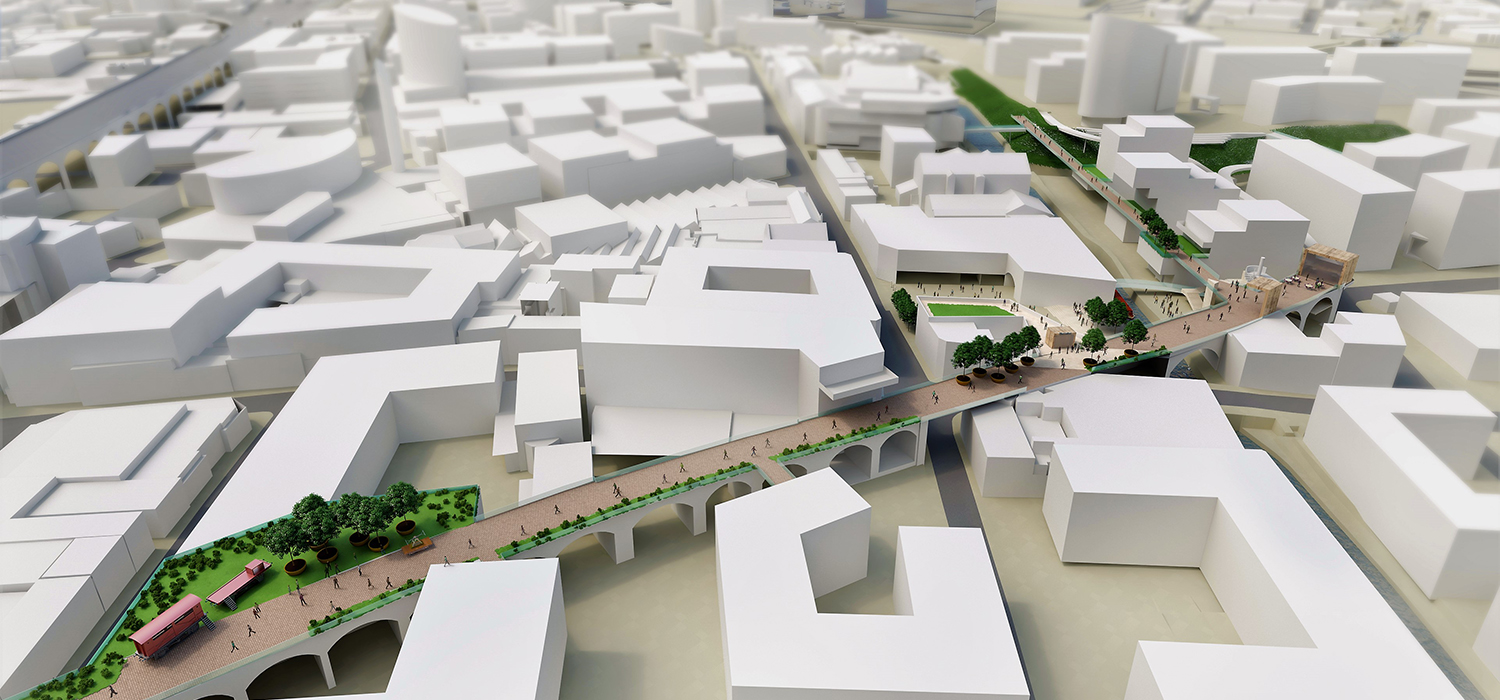Table of Contents
The challenge
Digbeth lies at the heart of Birmingham's Creative Quarter. With the popularity of the area on the rise, so too was the demand for wider regeneration.
48,000 ha
Digbeth was once the industrial heart of England's second biggest city, lying at the centre of what is now Birmingham's buzzing Creative Quarter – the once red-brick factory walls an ever-changing urban landscape of colourful street art. With the popularity of the area on the rise, so too was the demand for an investible framework that would support the wider regeneration of the area. A careful balance needed to be struck between new development and preserving the existing character of this historic and creative hub.
The solution
Working with Birmingham City Council and Homes England, we took the lead in preparing a comprehensive and investible regeneration framework masterplan for the area.
2,000+
We were appointed by Birmingham City Council, together with Homes England, as lead consultant to prepare a comprehensive regeneration framework masterplan. Its aim was to explore development opportunities and set out an investible vision focused on the canal corridor in east Digbeth. This covers approximately 48 hectares of the city and has the potential to provide more than 2,000 new homes, whilst enhancing the existing Creative Quarter and responding to two Conservation Areas.
As part of our role, we provided project and development management, regeneration masterplanning and urban design, landscape and public realm design, flood risk, environment, engineering and infrastructure and transport consultancy.
-
READ MORE
The resurrection of Digbeth as a city hotspot is just part of the story. Birmingham as a whole is in the midst of an urban renaissance. The arrival of HS2 and its increased connectivity to London and the rest of the country promises further transformation, unlocking major sites for regeneration and accelerating Birmingham’s social, environmental and economic growth.
The new Curzon Street HS2 station will effectively create a new ‘front door’ to catalyse further growth. To the south, Digbeth and the Grand Union Canal also have a key role to play. They present a unique stage to develop a new urban district close to the core of the city, as well as connecting to Birmingham’s heritage and legacy as an important industrial centre.
The masterplan focuses on the development’s potential to create strong links to key planned public transport services, and provides for a balanced range of uses. In view of the significant population uplift that is expected to occur throughout the delivery period, it also makes potential provision for social infrastructure, including a new primary school.
Our advice and guidance on potential funding led to enhancements to open space and public access - thanks to the identification of funding via Parks Infrastructure Growth Schemes, and consideration of what might be supported by the £1bn Curzon Investment Fund.
We also helped to develop a strategy to expand and improve local business premises by supporting existing businesses and start-ups with gap funding grants and loans. This included advising on the introduction of an affordable workspace policy to encourage greater uptake by small and medium sized enterprises, incentivising investment thanks to superfast broadband infrastructure, pump-priming of key development sites and providing a Development Protocol to help in securing planning permissions. By expanding the City Centre Enterprise Zone, there is now the potential for an additional £724 million worth of investment into the Curzon area.

The impact
The result is a bold new vision for a thriving live/work neighbourhood, expanding on Digbeth's characterful, creative and lively energy.
8
From masterplan to reality
With the Masterplan complete, the creation of a Supplementary Planning Document could act as a focal point for regeneration. Forming a delivery plan for the public sector, it sets out key next steps for realising the potential of Digbeth - including identifying early narrative business cases for funding through the Curzon Delivery plan and other sources.
We examined and developed in detail eight case study areas, which served to enhance the evidence base to support the framework masterplan. The case studies all included identifying existing barriers to development and the process for moving into delivery.
-
READ MORE
Step by step, the vision for Digbeth's future is coming to fruition. This major development – a new multi-use live/work destination, linked by the canal and a mere stroll from the city centre - will not only enhance the Creative Quarter's heritage and lively energy but also build on the diversity of Birmingham as an exciting city in flux.
Not done reading?
This also might be interesting for you
- Related Projects
- Related Insights
- Related Blogs







